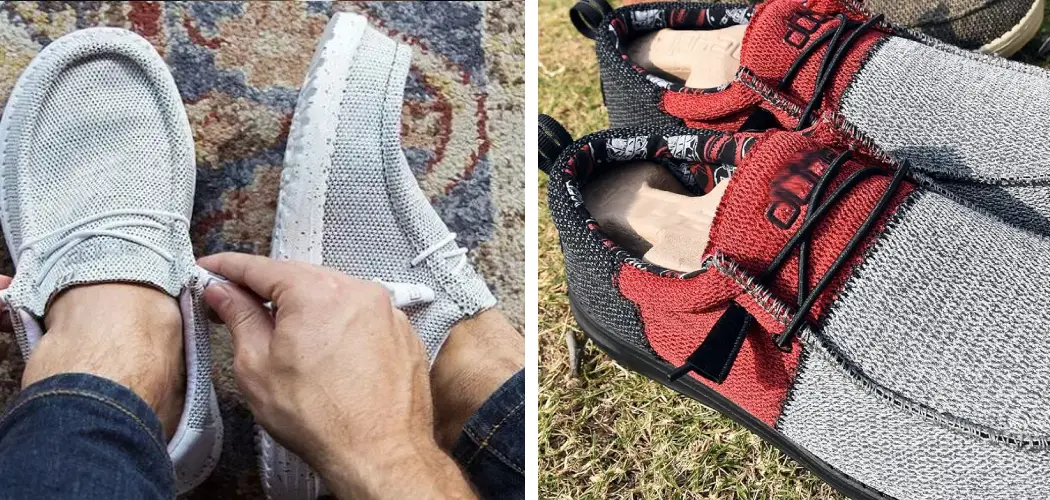Hey Dude shoes have become synonymous with comfort, style, and versatility. Their lightweight design and wide range of styles and colors make them ideal for almost any casual occasion. Whether you’re walking around the city, heading to the beach, or just relaxing at home, Hey Dude shoes ensure your feet stay comfortable throughout the day. The adaptability of these shoes goes beyond just the variety of situations they can be worn in; it also extends to how easily they can be customized to fit the wearer’s unique style and comfort needs, particularly through the simple process of replacing.
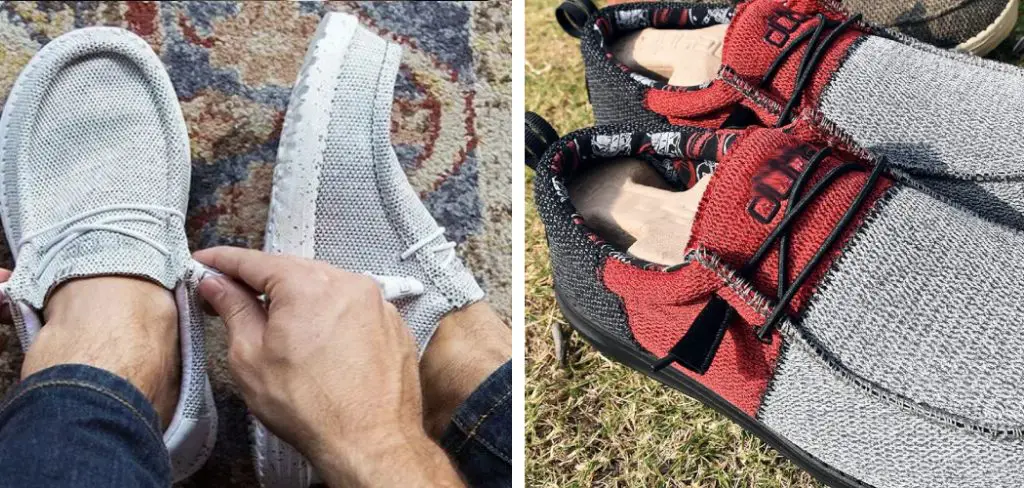
Understanding how to relace Hey Dudes can significantly enhance the comfort and functionality of your shoes. Proper lacing techniques not only ensure a snug fit but also contribute to the longevity of the shoe. Given their unique construction and the variety of lacing styles available, knowing how to relace hey dudes becomes essential for every owner.
The right lacing technique can provide better support, improve foot stability, and personalize your footwear to better match your foot shape and walking habits. This part of shoe maintenance is often overlooked but is crucial for maximizing Hey Dude shoes’ benefits. Whether you’re aiming for a tighter fit for those long walks or a looser style for easier slip-on functionality, mastering the art of relaxing is key.
Understanding Hey Dude Lacing Systems
A. Overview of Hey Dude Shoe Designs
Hey Dude shoes break the mold of traditional footwear by offering an innovative blend of comfort, style, and practicality. Designed with versatility in mind, these shoes feature various designs suitable for different lifestyles and preferences. Hey Dude shoes cater to a broad audience from the classic Wally, with its lightweight canvas upper and flexible sole, to the more rugged Mistral, designed for the adventurous spirit.
A key characteristic of Hey Dude designs is their emphasis on balancing a casual aesthetic and functional durability. This is evident in their use of high-quality materials like canvas, cotton, and EVA foam that ensure both comfort and resilience. Additionally, Hey Dude shoes stand out for their wide range of colors and patterns, allowing users to express their personal style effortlessly. The brand’s commitment to innovation is most apparent in its eco-friendly lines, which utilize recycled plastics and organic cotton, underscoring its dedication to style and comfort, and environmental sustainability.
B. Types of Lacing Systems
The variety in Hey Dude shoe designs matches their diverse lacing systems, offering something for everyone from the aesthetically inclined to those seeking functional benefits. Primarily, Hey Dude employs two types of lacing systems:
- Traditional Lacing System: This system, found in models like the Wally, involves eyelets and a lace running through them in a crisscross pattern. It’s straightforward to adjust, making it easier for wearers to find their perfect fit and providing even pressure distribution across the foot. The traditional system is ideal for those who prefer a classic look with the added benefit of customizability in tightness and fit.
- Elastic Lacing System: A standout feature in several Hey Dude models, the elastic lacing system offers unparalleled ease of use. This lacing type replaces traditional laces with an elastic cord, coupled with a toggle for quick adjustments. This system enables a snug fit by conforming to the foot’s shape and allows the shoes to be slipped on and off with ease, catering to those seeking convenience without compromising on fit. This is particularly beneficial for individuals with mobility issues or prioritizing a quick and hassle-free footwear experience.
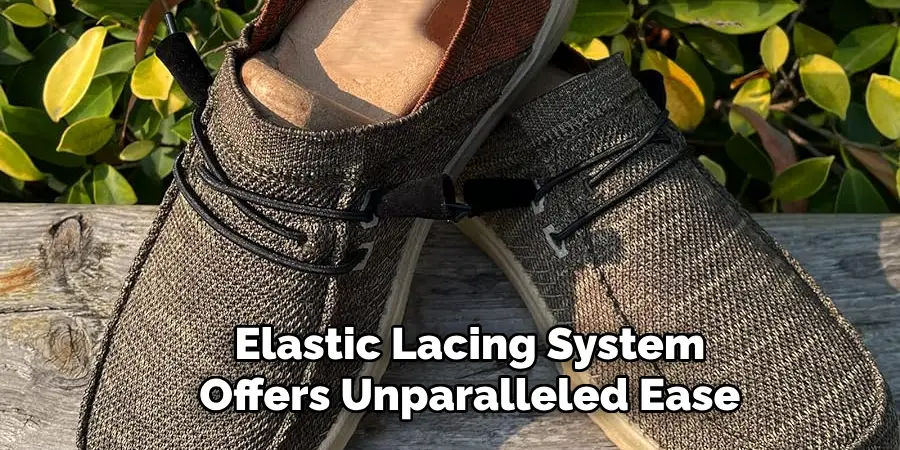
Both lacing systems uphold the brand’s ethos of combining functionality with comfort and style. Choosing the right lacing system depends on personal preference, the desired level of convenience, and the specific activities for which the shoes will be worn.
Preparing for Relacing
A. Assessing the Condition of Your Laces
Before beginning the relacing process, assessing the condition of your existing laces is imperative. This evaluation is crucial as it determines whether a new lace is needed or if the current one can still serve its purpose. Begin by looking for signs of wear and tear, such as fraying, permanent staining, or loss of elasticity, which indicate the need for replacement.
Also, consider the lace’s length; over time, laces may stretch, affecting their functionality. Inspecting for uneven wear or any damage can prevent potential discomfort and ensure that your Hey Dude shoes continue to provide the optimum blend of comfort and style. This step is about aesthetics and maintaining the structural integrity and support that the correct laces offer, contributing significantly to the overall health of your feet.
B. Gathering Necessary Tools
Replacing your Hey Dude shoes doesn’t require an extensive toolkit, but having the right items at hand can make the process smoother and more efficient.
Firstly, a new pair of laces that matches your style and the shoe’s requirements is essential. When choosing laces, consider their length, width, material, and color to ensure they perfectly complement your Hey Dude shoes.
Secondly, a lace threading tool or a small, flexible needle may be beneficial, especially for tighter eyelets or intricate lacing patterns.
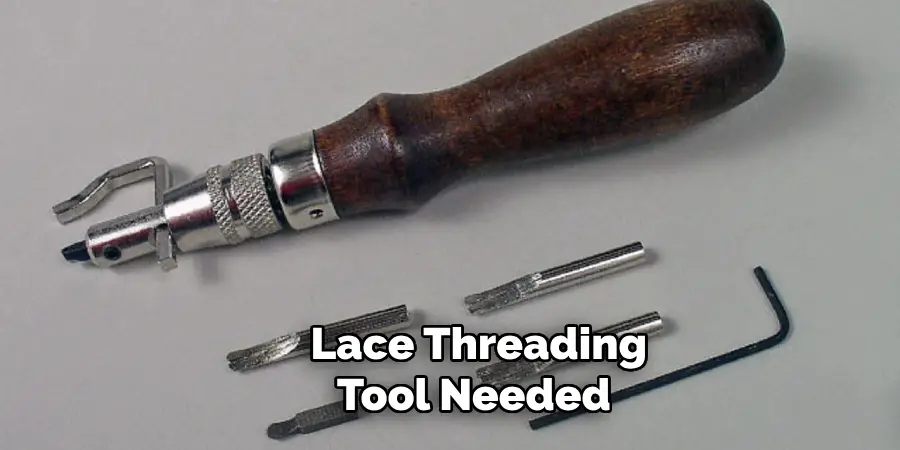
Additionally, having a pair of scissors handy is advisable for trimming any excess lace once you’re done. A soft brush and a mild cleaning solution can be useful for those who wish to clean their shoes or eyelets before replacing them.
Lastly, preparing a small workspace with good lighting can significantly help by providing a clear view of the eyelets and the lacing process. Gathering these tools in advance will create a seamless and enjoyable shoe customization experience.
How to Relace Hey Dudes: Step-by-Step Guide
Step 1: Removal of Old Laces
1. Loosening the Existing Laces
The first step in replacing your Hey Dude shoes is to loosen the existing laces. This can be done by gently pulling apart the laces starting from the top eyelets and working your way down to the bottom. This method ensures that there is no unnecessary strain on the eyelets or the fabric of the shoes, preserving their integrity. Take your time with this process to avoid tangling or tearing the laces, especially if they are frayed or show signs of significant wear.
2. Carefully Removing Them
Once fully loosened, carefully remove the laces from each eyelet. Start from the top and gently pull each lace out, being mindful not to pull too hard to avoid damaging the eyelets. If you encounter resistance, especially with laces that have knotted or frayed ends, resist the urge to force them out. Instead, gently wiggle the lace back and forth until it comes loose. This meticulous removal helps protect the structural composition of your Hey Dude shoes and prepares them for the new lacing.
Step 2: Choosing the Right Lacing Technique
1. Traditional Crisscross Lacing
After removing the old laces and selecting the perfect replacements, the next step is to choose your lacing technique. The traditional crisscross lacing is highly recommended for its balance of form and function. To achieve this, start by feeding the lace through the bottom eyelets towards you, ensuring that both ends are even. Then, cross the laces over each other and feed them through the next set of eyelets up, alternating this pattern until you reach the top. This technique provides even pressure distribution across the foot, enhancing the comfort and fit of your Hey Dude shoes.
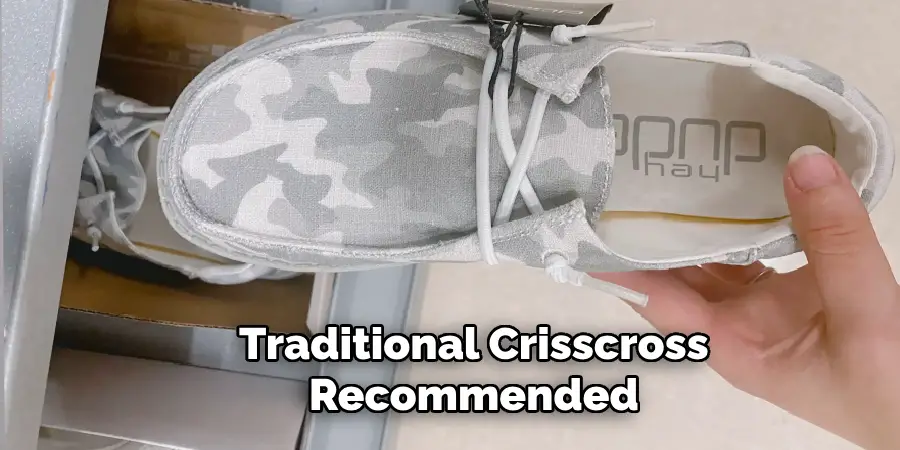
2. Alternative Lacing Styles
For those seeking a variation from the norm, several alternative lacing styles can add a unique twist to your Hey Dude shoes while maintaining or enhancing their functionality. One popular alternative is the bar lacing method, ideal for those who prefer a cleaner look or need to minimize pressure points on the top of their foot. Another is the ladder lacing, which looks distinct and offers additional tightness and support, perfect for activities requiring more secure footing. Each lacing style has its benefits and can be chosen based on personal preference, the shoe style, and the desired level of comfort and support.
Tips for Achieving Optimal Fit and Comfort
A. Adjusting Tension for Support
Achieving the right tension in your shoelaces is key to ensuring both comfort and support throughout the day. Pull the laces snugly but not so tight that they constrict the foot, starting with the bottom eyelets. This foundational tension sets the stage for optimal fit as you work your way up the shoe. At each subsequent eyelet, apply even pressure to maintain consistency in fit. It’s particularly important to adjust the tension around the natural bend of the foot, as this area requires flexibility while walking.
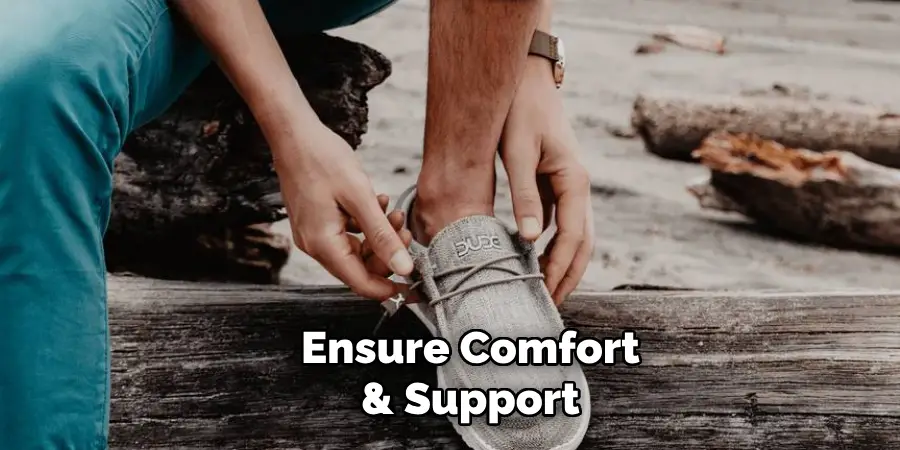
For enhanced support, you can increase tension at the midpoint where the foot arches, then slightly relax it towards the top to accommodate the wider part of the ankle. This technique helps distribute support evenly, preventing any discomfort that might arise from laces being too tight in one area and too loose in another. Remember, the goal is to find a balanced tension that securely holds the foot, offering a stable foundation without compromising comfort.
B. Ensuring Even Distribution of Pressure
The distribution of pressure is crucial for sustained comfort, especially for those who spend long hours on their feet. Pay close attention to the lacing technique you choose to ensure even pressure. The traditional crisscross lacing method naturally facilitates an even pressure distribution, allowing for incremental adjustments across the entire foot. However, experimenting with alternative lacing styles, such as bar lacing or loop lacing, can help alleviate stress points for those with specific pressure sensitivities.
Adjust the tightness of your laces from the bottom up, assessing comfort level at each stage. If an area feels too tight, slightly loosen the laces in that section, checking to see that you maintain a snug fit that prevents the foot from sliding within the shoe. This practice enhances overall comfort, promotes better circulation, and reduces the risk of discomfort or injury. By adjusting and evenly distributing the pressure of your laces, you create a more personalized, supportive, and comfortable shoe fit tailored to your foot’s unique contours and needs.

Customizing Your Lacing Style
A. Adding Personal Flair with Different Techniques
Customizing your Hey Dude shoes by experimenting with different lacing techniques is a fantastic way to inject personal flair into your footwear. Beyond the traditional crisscross and the minimalist bar lacing, there is a world of lacing styles to explore, each offering a unique twist on the everyday look. Try the diagonal lacing method for a sleek, modern appearance that sets you apart. The zig-zag pattern is also a popular choice, providing a dynamic look that catches the eye.
For those looking to make more subtle changes, varying the color or texture of your laces can add a significant impact without altering the lacing technique itself. Incorporating colors contrasting or complementing your shoes can dramatically change their appearance, showcasing your personality and style. Plus, considering reflective laces can enhance visibility during evening walks or runs. No matter how small, each change personalizes your shoes, making them uniquely yours.
B. Experimenting with Unique Patterns
Diving deeper into customization, experimenting with unique lacing patterns can transform your Hey Dude shoes into a statement piece. The ‘lattice’ pattern, for example, creates a complex, interwoven design that attracts attention and enhances your shoe’s fit. Starting might seem daunting, but with patience, it becomes a worthwhile endeavor. Another intriguing option is the ‘double back’ technique, which involves looping the laces back upon themselves at each eyelet, offering a distinctive look whilst providing extra tightness.
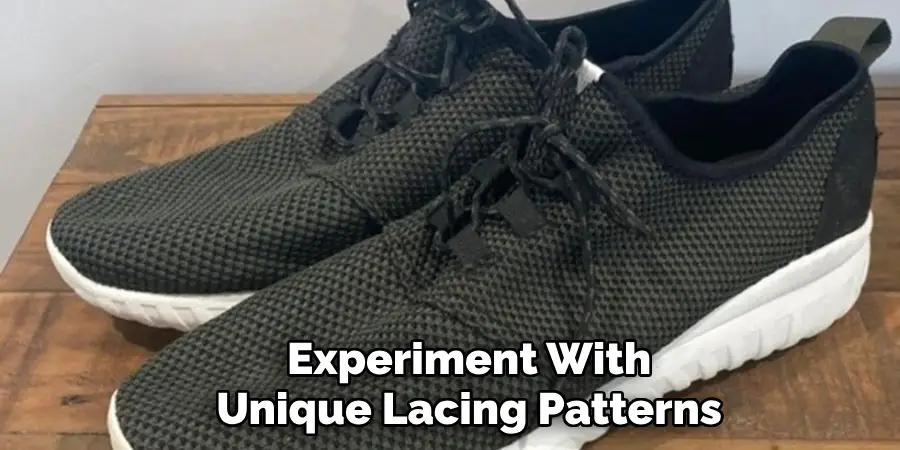
For the adventurous at heart, creating your patterns can be incredibly rewarding. Begin by envisioning the desired outcome, whether it aims for aesthetic appeal or specific functional adjustments, like easing pressure points. Sketching your idea might help visualize the path the laces will take. Don’t be afraid to mix techniques, such as combining bar lacing at the bottom with crisscrossing up top for a hybrid approach. Also, consider the usability of unconventional tools like beads or lace locks to add texture and color.
Remember, trial and experimentation are the keys to unlocking a distinctive and personalized shoe. Each attempt brings you closer to discovering a lacing style that looks fantastic and feels right for you. Whether you’re looking to make a fashion statement, find a more comfortable fit, or simply want your shoes to stand out, the effort you put into customizing your lacing style will pay dividends in both confidence and comfort.
Troubleshooting Common Relacing Challenges
A. Dealing with Tangled Laces
Tangled shoe laces can be a frustrating obstacle when you’re trying to get your footwear just right. More often than not, tangles occur due to hasty removal or improper storage of shoes. To tackle this issue, start by finding both ends of the lace and slowly work through the knot without pulling too hard, as this could further tighten the tangle. Gentle patience is key. Utilizing a pin or a needle can help loosen the tighter knots by carefully inserting it into the center of the tangle and gently wiggling to create space.
Once you’ve untangled a portion, shift your focus to the next tangled section by following the lace path closely. In some cases, applying a small amount of lubricant, such as talcum powder, can reduce friction, making it easier to untangle the laces. For prevention, consider storing shoes with loosely tied laces to avoid knots forming during storage, or remove the laces completely if you’re packing the shoes for travel. Regular maintenance, such as washing laces separately, can also prevent tangling and ensure they remain in good condition.
B. Addressing Uneven Lacing Tension
Uneven lacing tension can lead to discomfort, blisters, and a general feeling of instability in your footwear. Addressing this issue begins with understanding the importance of balanced tension throughout the shoe. To correct uneven tension, start by completely unlacing your shoes, allowing you to begin afresh. Lace up your shoes slowly, paying close attention to the tension at each eyelet. Pulling with equal force on each side of the laces is essential to maintain even tension across the foot.
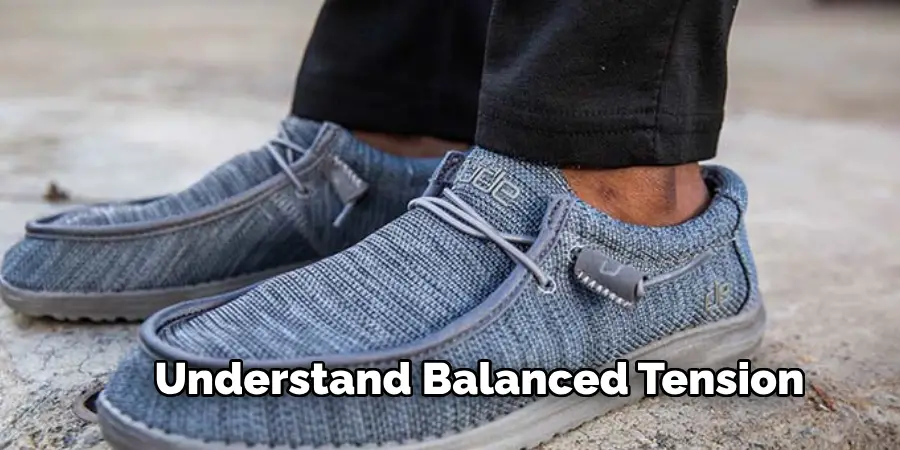
When replacing, consider the parts of your foot that may require different tension levels; typically, a tighter fit around the arch for support and a looser fit near the toes for comfort. Use a ‘runner’s loop’ or ‘lock lacing’ at the top to firmly secure the ankle without excessively tightening the entire shoe.
For those encountering consistent issues with uneven lacing tension, it might be worthwhile to experiment with different lacing techniques tailored to your foot’s distinct shape and needs. Techniques vary widely, from parallel lacing which can reduce pressure points, to lacing methods that increase tightness or slack in specific areas for better support or relief.
Lastly, regularly check and adjust your laces throughout the day, as the natural movement of your feet and daily activities can lead to shifts in tension. Keeping a small, flat tool or a lace puller in your bag will allow for quick adjustments on the go. Building the habit of mindful lacing and being attentive to how your shoes feel during the day are your best strategies for combating uneven lacing tension, ensuring comfort, and preventing foot fatigue.
Maintenance Tips for Longevity
A. Cleaning and Care of Laces
Keeping your shoe laces clean enhances their appearance and extends their lifespan. Start by removing the laces from your shoes, which allows for thorough cleaning and provides an opportunity to clean the eyelets and the shoe’s tongue—an area often overlooked. For basic dirt and grime, soaking the laces in a mixture of warm water and mild detergent works wonders. Gently rubbing the laces between your hands or with a soft brush can help remove stubborn dirt.
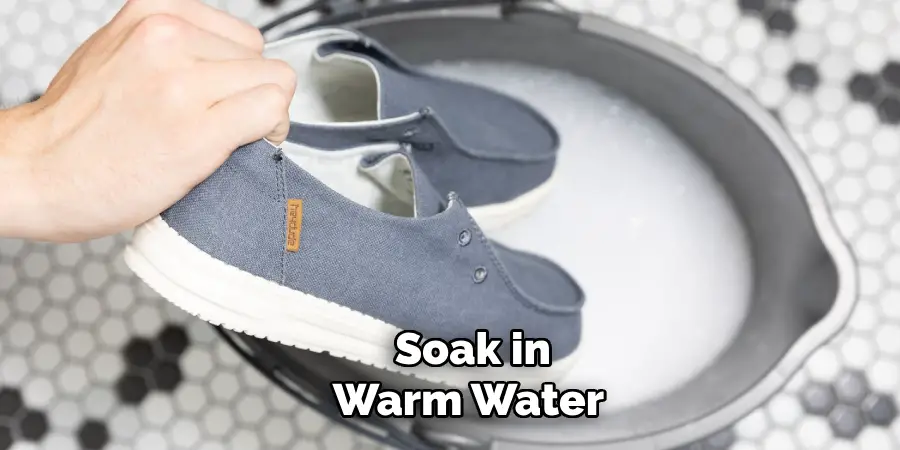
Applying a small amount of stain remover before soaking may be necessary for tougher stains. Rinse the laces thoroughly to remove any soap residue, as this can attract more dirt over time. When drying, avoid direct sunlight or high heat sources, which can weaken the fibers or cause discoloration. Instead, lay them flat to dry or hang them in a shaded area with good airflow. A quick wash cycle in a laundry bag for synthetic laces can suffice but always check the care instructions first. Regular cleaning not only keeps your laces looking good but also prevents the buildup of dirt and oils that can degrade the materials.
B. Periodic Inspection for Wear and Tear
Conducting regular inspections of your shoes and their laces for signs of wear and tear can significantly extend their usable life. Start with visually examining the laces, looking for fraying, noticeable thinning, or areas where the outer material has worn through, exposing the inner core. These signs indicate it’s time for a replacement. It’s also crucial to check the eyelets for any sharp edges that could be causing damage to the laces, as this can lead to premature breakage.
When inspecting your shoes, pay special attention to the soles, looking for areas of uneven wear, as this could affect your walk and, consequently, how the laces hold tension. The insoles should be checked for signs of compression or wear, as a good insole can affect the overall fit and comfort of the shoe, indirectly affecting how the laces perform. Another key area is the shoe’s interior stitching, particularly around the eyelets and the back of the heel, as unraveling or loose threads can compromise the shoe’s structure and fit.
If your inspections reveal any issues, addressing them promptly can prevent further damage. For eyelets that have become rough, a small file or sandpaper can be used to smooth them out, preventing further lace wear. Insoles showing signs of wear should be replaced to maintain support and comfort. Regular maintenance, combined with prompt attention to repairs, ensures that both your shoes and their laces continue to look and perform their best over time.
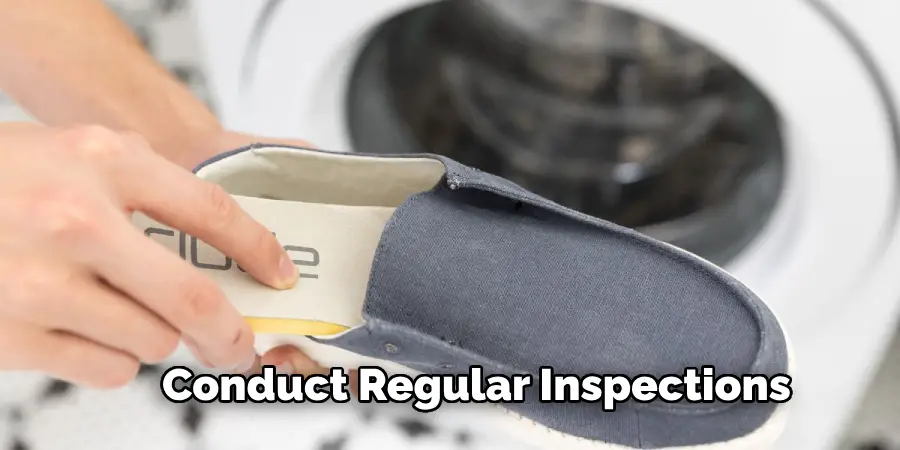
Conclusion
Throughout this guide, we’ve explored several relacing techniques to enhance your footwear’s functionality and appearance. From addressing tangled laces to correcting uneven lacing tension, the strategies outlined serve as a comprehensive toolkit for anyone looking to improve their shoe-wearing experience.
Techniques such as parallel lacing, runner’s loop, and lock lacing provide tailored support and comfort and prevent the common pitfalls of daily wear. Regular maintenance, including cleaning and periodic inspections for wear and tear, further ensures the longevity of both your laces and shoes. By adopting these practices, individuals can enjoy a noticeable improvement in the fit and feel of their footwear, leading to better foot health and overall satisfaction.
For Hey Dude shoe enthusiasts looking to refresh their favorite pairs, learning how to relace Hey Dudes effectively can breathe new life into your well-loved footwear. This guide equips you with the knowledge and techniques to personalize and enhance your Hey Dudes, from simple maintenance tips to intricate lacing methods tailored to your needs. Whether you’re seeking comfort, style, or performance improvements, these relacing techniques offer a way to customize your shoes uniquely.
We encourage you to explore the various methods and discover the profound difference a well-laced shoe can make. Remember, with a little patience and practice, mastering how to relace Hey Dudes can transform your experience, ensuring your shoes continue to support your adventures comfortably and stylishly.

